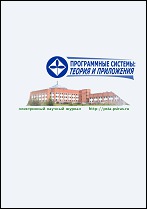|
This article is cited in 2 scientific papers (total in 2 papers)
Mathematic Modeling
The use of an adaptive mesh based on a quadtree for modeling the final state of a quantum field system under pulsed external action
A. D. Panferov, A. V. Makhankov, A. A. Trunov
Saratov State University
Abstract:
The success of using mathematical models that determine the behavior of
quantum field systems in parametric spaces critically depends on the level of
optimization of the procedure of finding the solution. The paper considers the
problem of calculating the density of carriers arising in graphene as a result of the
action of a pulsed electric field. The basis of the model is a system of kinetic
equations that provide the calculation of the residual distribution function. Its
integration over momentum space gives the desired carrier density.
The problem lies in the high computational complexity of covering the
momentum space with a uniform mesh, which provides an accurate calculation
of the density for various parameters of the field momentum. Moreover, the
model does not contain criteria for determining satisfactory mesh parameters.
The article proposes and implements a procedure for constructing an adaptive
mesh in the form of a quadtree having a variable size of covering squares. The
procedure is iterative and combined with the process of calculating the values of
the distribution function.
Key words and phrases:
numerical simulation, adaptive mesh, quadtree, graphene.
Received: 18.12.2019
Accepted: 26.03.2020
Citation:
A. D. Panferov, A. V. Makhankov, A. A. Trunov, “The use of an adaptive mesh based on a quadtree for modeling the final state of a quantum field system under pulsed external action”, Program Systems: Theory and Applications, 11:1 (2020), 79–92; Program Systems: Theory and Applications, 11:1 (2020), 93–105
Linking options:
https://www.mathnet.ru/eng/ps362 https://www.mathnet.ru/eng/ps/v11/i1/p79
|

| Statistics & downloads: |
| Abstract page: | 115 | | Russian version PDF: | 64 | | English version PDF: | 13 | | References: | 16 |
|




 Contact us:
Contact us: Terms of Use
Terms of Use
 Registration to the website
Registration to the website Logotypes
Logotypes







 Citation in format
Citation in format 
